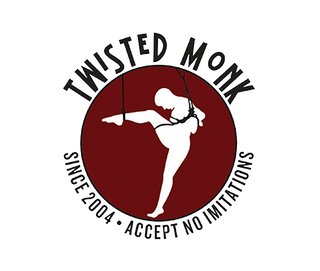The most valuable lesson I’ve learned during my rope journey has not been a special knot or unique tie, it’s the power of connection rope has to offer: whether that’s connecting with myself through self tying, or with someone else as a receiver or caster of rope. However, during the actual journey of acquiring rope knowledge, it can be very difficult to hold onto the power of connection. While learning, it’s easy to get too focused on the little details, lost in an instructor’s lesson, or stuck with your nose in a book. Although these are all aspects of the rope bondage learning process, they shouldn’t be allowed to prevent or distract from the power and joy of connection rope offers.
The second most important lesson I’ve learned supports the first: an attitude of playful joy takes the pressure off and makes learning rope the fun and connecting enterprise I love. Learning to safely put rope on a human body can be intimidating, clouded by expectations and accompanied by anxiety and pressure to create a special experience right out of the gate. These expectations can get in the way of the reason we really do rope in the first place: because it’s fun. Prioritizing playful joy while learning, whether solo or partnered, keeps you engaged and fosters that power of connection.
My personal bondage style is aesthetic. I love making people feel beautiful and collaborating to create a magical, unique visual scene. I often put a lot of pressure on myself to do things “right,” smooth rope and perfectly flattering harnesses. This pressure can distract me from the experience I want to create with my rope receiver. When I start to feel like I’m slipping too deep into “technical mind” and away from the moment, I have found creating a reason to laugh, and making my rope receiver laugh, pulls us back together. Sometimes literally by giving a playful tug.
Partnered rope experiences are collaborative. A rope receiver does not simply sit there inanimate; they can bring just as much playful joy to the scene as the caster. Daisy (@daisydenalgas), the rope partner I have done most of my learning with, notices when my focus slips from our collaboration and onto bending the rope to my will. When she sees my eyes squint with frustration, she knows a silly in-rope dance or a goofy comment will get me refocused on her and my eyes crinkled in a smile instead. I am infinitely grateful to her for it.

Daisy entered our rope journey with intimidating expectations of intense sensation and overt sexuality. However, through learning and playing together Daisy says she discovered that her joy in rope is “making and becoming a fun piece of art, from channeling [her] inner apple tree in an orchard to being a mushroom hunted in the forest.” Because our focus is on enjoying being together while learning about what rope bondage means to us, we’ve been able to create our own special brand of bondage that centers natural beauty and visual interest.

Often, Daisy and I both feel the pressure of our aesthetics goals while learning new things. We found one creative solution to maintaining connective playfulness in a Goodwill: a Chewbaca mask. Although not a typical element of a rope kit, we have gotten more genuine smiles and had more joyful moments with that mask than any other toy. Whenever one of us is bogged down by the pressure of aesthetic perfection, the Chewbaca mask comes out, and we are laughing and creating joy together in the moment once more. I don’t mean to suggest everyone should add a Chewbaca mask to their kit, but I do think everyone could benefit from prioritizing the connective power of laughter in their learning.

I also work to apply the lessons of playful joy I learned with Daisy to my self-tying. The first time I tied myself, I struggled to make the rope lay right as I wrapped it around myself. I got mad at the book I was learning from for not including the images I thought would be most helpful. I got tired, frustrated, sweaty, and burnt out before finishing the tie I set out to do. I knew I was missing something: I wasn’t having fun. I turned up my party playlist, did a silly dance letting the rope from my half tied harness swing around me, and found my joy. Now when I do self suspensions, I make a point to identify how I will manifest that playfulness before I even pick up a rope. Often, it is music and dance, sometimes I’ll plan an intentional moment in my sequence to gleefully swing around. If I catch myself falling out of the moment and into “technical mind,” I’ll run through a series of silly faces or smack my own ass to remind myself why I’m there, why I want to keep learning: BECAUSE IT’S FUN.

The ways to learn about rope are as infinite as the ways to play with it. As long as safety is prioritized, the only way to learn or do rope bondage wrong is to not enjoy it. So do a little dance, put on a silly mask, and make your partner (and yourself) laugh, because we are all here for the JOY in connection, even if that joy is extreme sensations, degrading positions, or uncomfortable restraint.
-Rose
Rose (she/they) is one of Twisted Monk’s own, Monk’s nibling in fact. They bring their experience as a gender and sexuality history writer to editing Twisted Monk’s blog, and her eye for color is responsible for our Limited Edition hemp dye jobs. You can often find Rose wandering the local woods looking for foragables, rope shoot locales, and color inspiration.
Insta: @rosytheropemaker
Fetlife: @rosytheropemaker

